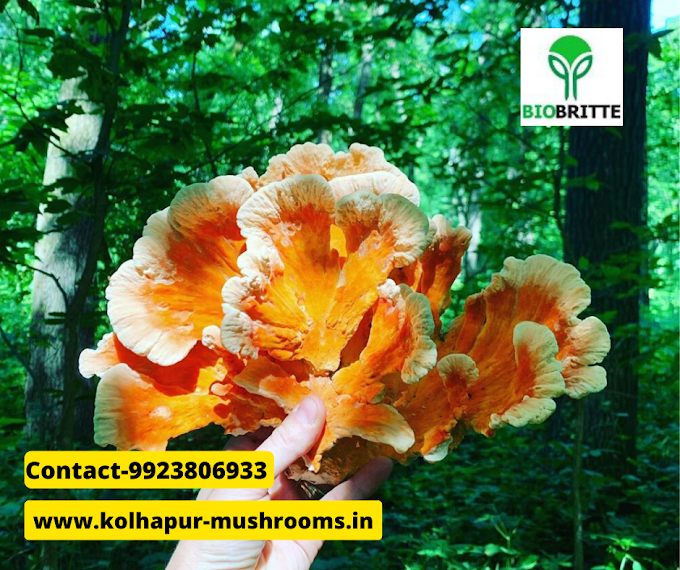The 5 Best Substitutes for Mushroom Powder | Substitute For Mushroom Powder | Mushroom Powder Manufacturers in India
It might be surprising for some people to learn that mushroom powder is not an ingredient in traditional cuisine.
This means that the mushroom’s taste and texture must be developed through careful preparation or cooking.
However, it can also be dry roasted without much care so that its distinctive flavor comes out stronger when cooked with other foods.
The mushroom powder has a distinct flavor that makes it a useful ingredient.
The 5 Best Substitutes for Mushroom Powder
If you want to get creative in the kitchen, it can be disappointing when you suddenly discover that you are out of mushroom powder.
Fortunately, this rarely happens since dried mushrooms exist in most kitchens or pantries.
The following list will provide you with five alternatives to using mushroom powder:
1 – Garlic Powder
Alongside salt and black pepper, garlic powder is a common seasoning found in almost every kitchen.
In terms of taste, it is slightly acidic with a hint of nuttiness.
In fact, garlic powder is made from dehydrating mashed garlic cloves.
They are then ground into a fine onion-like powder instead of the granular form.
In terms of taste, it has a slightly more bitter taste than fresh garlic cloves.
Compared to its fresh counterpart, garlic powder is not as strong or pungent.
This can make it an ideal substitute for those who want a milder taste compared to other options on this list.
2 – Nutritional Yeast
Nutritional yeast has a very distinctive taste.
This is often compared to cheese or even fish, which can be rather unpleasant for some people.
The yeast is naturally low in fat and sodium.
It also has high protein content and other health benefits, such as B-complex vitamins and folic acid.
Nutritional yeast is slightly nutty with a rather sweet aftertaste in terms of taste.
In fact, it often has an added hint of lemon juice to enhance its flavor.
While nutritional yeast is typically used as a vegan or vegetarian substitute for cheese, it can be rather expensive.
If you are looking for a more affordable option, it’s best to stick with either garlic powder or onion powder.
3 – Make Your Own Mushroom Powder
The great thing about mushroom powder is that it is very easy to make yourself.
To do this, simply follow the steps below:
Use a food dehydrator or oven to dry your mushrooms at low temperatures for five hours.
Once they are dried out, blend them into small pieces in your blender or food processor until you reach your desired consistency.
Store your mushroom powder in an airtight container.
The preparation time is the only downside to using this method, but it certainly beats spending money on commercial products or even buying whole mushrooms that will be used for just one recipe.
4 – Onion Powder
Onion powder is often used in dishes that already involve some onion.
This works particularly well in soups and sauces, where the onions are gradually cooked in the same dish.
Another benefit of using onion powder instead of fresh onion is that it won’t change the appearance of your food.
It is perfect for when you want to preserve the ‘visual appeal of a meal.
In terms of taste, onion powder is slightly sweet and rather mild.
It has a more ’rounded’ flavor with a less acidic aftertaste than garlic powder.
This means that it isn’t as good at enhancing other flavors in your dish.
While you can buy both mushroom and onion powder, they are also fairly straightforward to make yourself.
Simply dehydrate your onions in the oven or use a food dehydrator until they are dried out.
Then blend them into small pieces using your blender or food processor before storing them in an airtight container.
5 – Sliced, Dried Mushrooms
While dried mushrooms are often used in cooking, they can also be successfully used in place of mushroom powder.
The best part is that they do not need to be dehydrated; simply slice the mushrooms thin and let them dry naturally for a few days before using them.
You may find that some pieces will stick together after drying.
This is particularly the case with the white variety, which is more likely to stick together than other types of mushrooms.
One way around this issue is to sprinkle them with some salt before setting them out to dry.
The biggest downside to using dried mushrooms for mushroom powder is that it takes a while for them to dry out completely.
If you’re looking for an alternative that will work in a pinch, it’s recommended that you either use onion powder or nutritional yeast.
Biobritte agro is a top mushroom company that provides all types of mushrooms, their byproducts, and their training all over India.
For more information and
details please contact.
Contact
us for more details: +91 9923806933 / +91 9673510343
Email: biobritte.agro@gmail.com
To
Join Our Community Click Here
Tags- What can I substitute for mushroom bouillon?, Can you make your own mushroom powder?, What is a mushroom powder made of?, how to make mushroom powder, mushroom substitute in ramen, mushroom substitute in risotto, porcini mushroom powder, mushroom umami substitute, mushroom bouillon, Substitute for Mushroom powder, Mushroom Powder Manufacturers in India, The 5 Best Substitutes for Mushroom Powder, Substitutes for Mushroom Powder, How are mushroom powders made?, How do you make mushroom powder without a dehydrator?, How do you extract mushroom powder?, How do you make white mushroom powder?, Wholesale Mushroom Powder, Buy Mushroom Powder Online, Mushroom Powder Manufacturers in India, Mushroom Powder Supplier in India, Mushroom Powder Suppliers






